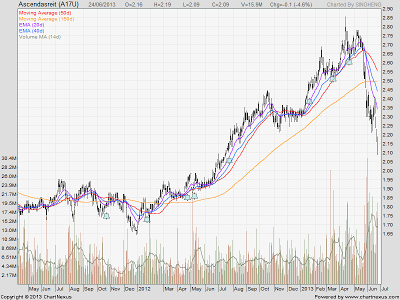After many years of reading books on successful people, I've more or less discovered the difference between how the rich, the middle class and the poor manage their money. A big portion of this analysis comes from the book rich dad poor dad. I will add in examples in context with the life in singapore.
The poor
Income --> Expenses --> Cashflow
$2000 $2000 $0
Most of the poor spend all their money and they don't even have enough to live by. A small portion of them will have some left over to save. However, the money they save are mostly in a bank account which gives a tiny interest rate of 0.05% pa. If you live your life in this manner, it is impossible to be rich.
Some people can earn $10000 and spend $10000 also. These people with high income we call them the middle class
The middle class
Income
Salary: $10000
↓
Expenses
Daily expenses: $3000
Car loan payment: $500
Housing loan payment: $2563
(30yr loan period with 2.6% interest)
Credit card payment: $800
Interest on car loan: $80
Interest on credit card: $200
Child 1 expenses: $1000
Child 2 expenses: $1000
Total expenses: $9143
Assets
Property: $800000
Cash in bank: $50000
Liabilities
Car loan $50000
Credit card debt $10000
Housing loan: $640000
As you can see, the middle class are generally highly educated and they can earn a high income. However, without proper financial management, they take on debts and never pay their credit card debt on time. Interest on credit card debt can become uncontrollable if compounded over time. Most credit card interest rates are at 24% pa. That means your debt amount will double in just 3 years.
Again, some middle class people will have savings. But they just put in a bank or some fixed deposit which only yield a tiny 0.05% pa for deposit accounts in Singapore.
For this example, this person saves $857 per month. Yearly savings is $10284
Interest earned on savings put in the bank: $10284*0.05%=$5.142
The rich
Income
Salary: $10000
Dividends from stocks: $1500
Rental from property: $500
↓
Expenses
Daily expenses: $2000
Housing loan payment: $2563
Child 1: $1000
Child 2: $1000
Child 3: $1000
Total expenses: $7563
Assets
Stocks: $200000
Property 1: $800000
Property 2: $1 million
Cash in bank $10000
Car (paid fully)
Liabilities
Housing loan: $640000
Housing loan: $800000
First, the rich will strive to increase their income. They will seek multiple sources of income instead of relying on a single source. They will create passive income for themselves through investing in stocks and property.
Second, they will not take up unnecessary debt so that their expenses can be kept to a minimum. In this example, this person saves $4437 per month. He saves $53244 a year. Let's say he invest this amount and has a return on investment of 18%. His money compounded over 4 years will become double to $106488.
Thirdly, the rich invest their money. That's a common link I found between all the rich people.
This is how the rich grow their money.
In conclusion if you want to be rich, follow the strategy below:
1) increase income and learn to create passive income
2) reduce expenses
3) invest your money and learn to invest wisely. (Note: It's true that many people burnt their fingers in the stock market. Most of the time these are individuals who have no knowledge on investing. You do not want to be one of them)
4) Do not take on bad debts especially credit card debts. If you have a credit card, do not over spend and always pay on time.
In part 2 of this series, I'll write on how you can become a millionaire by investing and the power of compounding. Also on the reverse, how you will become poorer by not investing and how inflation erodes your savings.
To read part 2, click here:















